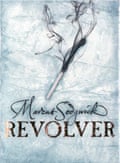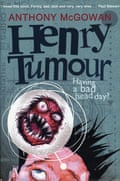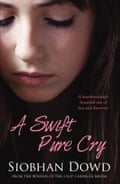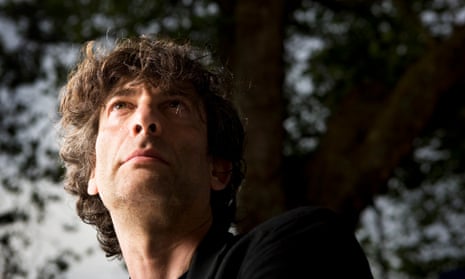What do my chosen books have in common? Well, in each case, somebody at some point has decided they are “young adult” books. As often as not, this person isn’t the writer. The category does have some meaning and some usefulness, of course; books that teenagers enjoy do often have certain congruences of perspective or theme. But the boundary is porous. Books are wayward things, and the good ones, the ones that are really alive with that energy that seems to detonate in your brain as you read, aren’t so easily contained.
As I’ve been compiling a new companion to children’s literature, I’ve been thinking a lot about the limits of this category – and I’ve read so much about what we call “crossover books”, books with appeal both to teenagers and adult readers. Yes, we all know that vampire stories and teen cancer romances have sold in vast numbers on both sides of that imaginary dividing line. But the crossover book has encompassed writing of great sophistication and ambition, too. For every Twilight
there is a Pullman; the young adult category contains plenty of pulp and plenty of fine writing – as any spurious category will. It contains work that is derivative, shallow and lazy, to be sure, and writing that is urgent and bold and experimental and complex, just like the adult market. The best of it can be fantasy (dystopian, sometimes) or realism (gritty, perhaps, but not necessarily so); it can be genre-based writing or uncategorisable, funny or profoundly serious, cool or lyrical, domestic and quiet or virtuosic and surreal.
Young adult writing today contains everything. The worst of it is as limited as any bad writing, the best could thrill any readers willing to put themselves in the hands of expert storytellers and great writers. Readers, that is, of any age. Hundreds of superb novels have been published for young adult readers. Here are just eight of them.

Revolver: Marcus Sedgwick (Orion)
Sedgwick has written across the age ranges, from children to adults, but it is his dark and atmospheric YA-branded work that best shows off what he can do. In Revolver, all his skill is compacted into something small and potent, controlled and devastating. As it begins, 100 miles north of the Arctic Circle, in 1910, 15-year-old Sig discovers his father’s corpse; but how did he die? The arrival of a threatening stranger forces Sig to investigate his parents’ past and confronts him with big questions about his own future. Set over just a couple of days, Sedgwick’s spare, crisply written narrative flips between the past and recent present, but the tension never disappears, and as he creates this most hostile of environments, it’s impossible not to be drawn in.
The White Darkness: Geraldine McCaughrean (Oxford)
From the Arctic to the Antarctic, with the incomparable McCaughrean. I don’t know many writers of any kind who have her apparently effortless consistency. Her books are always a thrilling read, with intricate plotting, characters you instantly feel you know personally and utterly beautiful writing; The White Darkness is no exception. It’s the story of awkward teenager Sym (who is in love with the very-long-dead Captain Oates) and her “uncle” and their lunatic mission to the Antarctic. Things surely can’t end well … The book is dark, clever, and menacing, and, if you’ve never read McCaughrean before, you’re about to make a glorious discovery.
Kit’s Wilderness: David Almond (Hachette Kids Hodder)
Skellig may be better known, but I think the book that followed is Almond’s masterpiece: Kit’s Wilderness is one of those rare works that changes how we see the world. Kit Watson moves to the Northumberland town where his grandfather lives, and there he befriends new classmate Allie Keenan, and meets a strange, wild boy called John Askew, who plays a game called Death. With the delicate, dark beauty that characterises so much of Almond’s work, Kit’s Wilderness explores things beneath the surface, suffused with death and menace, and the spirits of the past, but this is a wilderness that is full of beauty and things that are precious, too.

Henry Tumour: Anthony McGowan (Random House)
This is one teen cancer book among many, but truly it’s not like any other you may have come across. For one thing, it’s funny – grimly, hilariously so. For another, in this book the eponymous brain tumour talks. The schoolboy afflicted with this unusual predicament is nerdy Hector, who has to decide whether or not to take the outspoken, anarchic tumour’s advice as he finds his feet in the world, and has a lot of decisions to make before the surgeons get to work on them both. Original, smart and gripping, Henry Tumour breaks all kinds of rules, and does it with irresistible brio.
The Graveyard Book: Neil Gaiman (Bloomsbury)
Perhaps this isn’t a young adult book. Really, who is to say? It won the Booktrust teenage prize, and as far as I recall, the judges – I was one of them – had no category anxiety; we just knew it was something that needed to be read. It is one of those books that gives you a whole world – small and wonderful – which is entrancing for eight chapters, and which you feel very sorry to leave. It is set, as the title suggests, in a graveyard, where young Bod (short for “Nobody”) makes his home after his parents are murdered. Bod finds himself a new family and new friends – most of them long dead – a set-up that allows Gaiman’s macabre imagination to run wild. Along with the great characters and friendships, there is a gripping story – episodic with echoes of The Jungle Book – some delightful humour, and, as a bonus, a set of typically superb black-and-white illustrations, by Chris Riddell or Dave McKean, depending on your preferred edition.
Chaos Walking trilogy: Patrick Ness (Walker)
For ambition and scale, this highly accomplished trilogy is hard to beat. The opening volume, The Knife of Never Letting Go, introduces us to Todd Hewitt, who lives in a place where there are no women, and where the thoughts of every man can be heard all the time (this is called Noise). Todd meets a girl, Viola, and they go on the run. Tensions build as a great battle breaks out between two factions, with Todd and Viola forced into involvement on opposing sides. The war explodes in scale and complexity, and stakes rise before a thrilling and satisfying conclusion to the series. The story is excitingly paced and has a cast of engaging characters, but taken together, the trilogy is also a complex study of responsibility, difference, maturity and power.

A Swift Pure Cry: Siobhan Dowd (Random House)
This debut introduces the small-town community of Coolbar in mid-80s Ireland, where we meet Shell and her young siblings. Dowd was a writer of immense sympathy and insight, and in A Swift Pure Cry she takes Shell, and her reader, on a journey. Many people assume young adult fiction will always be heavy on issues, and there are some big ones in this book, which tackles faith and death, but the questions are born out of, and always in the service of, the story and characterisation. A Swift Pure Cry is never wilfully bleak, never heavy-handed, never moralistic. A fine piece of writing.

Comments (…)
Sign in or create your Guardian account to join the discussion